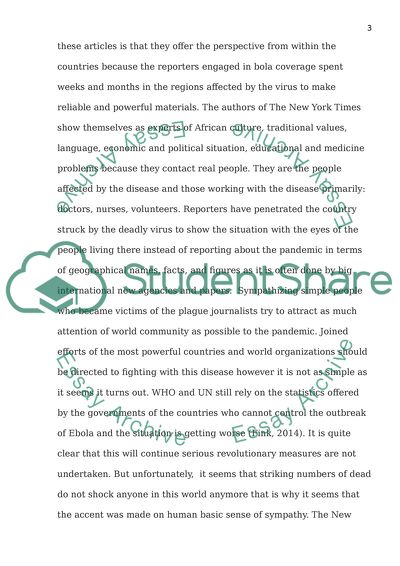Cite this document
(New York Times about Ebola Outbreak Literature review Example | Topics and Well Written Essays - 2500 words, n.d.)
New York Times about Ebola Outbreak Literature review Example | Topics and Well Written Essays - 2500 words. https://studentshare.org/journalism-communication/1881808-a-content-analysis-of-the-ebola-outbreak-in-the-new-york-times-newspaper
New York Times about Ebola Outbreak Literature review Example | Topics and Well Written Essays - 2500 words. https://studentshare.org/journalism-communication/1881808-a-content-analysis-of-the-ebola-outbreak-in-the-new-york-times-newspaper
(New York Times about Ebola Outbreak Literature Review Example | Topics and Well Written Essays - 2500 Words)
New York Times about Ebola Outbreak Literature Review Example | Topics and Well Written Essays - 2500 Words. https://studentshare.org/journalism-communication/1881808-a-content-analysis-of-the-ebola-outbreak-in-the-new-york-times-newspaper.
New York Times about Ebola Outbreak Literature Review Example | Topics and Well Written Essays - 2500 Words. https://studentshare.org/journalism-communication/1881808-a-content-analysis-of-the-ebola-outbreak-in-the-new-york-times-newspaper.
“New York Times about Ebola Outbreak Literature Review Example | Topics and Well Written Essays - 2500 Words”. https://studentshare.org/journalism-communication/1881808-a-content-analysis-of-the-ebola-outbreak-in-the-new-york-times-newspaper.


